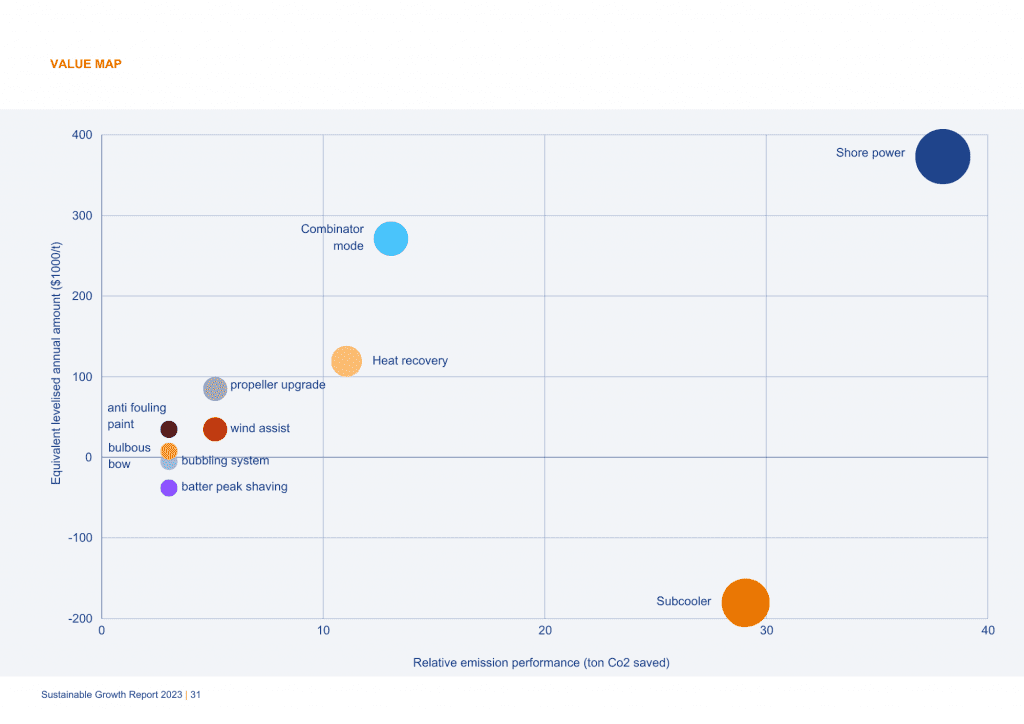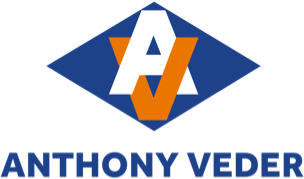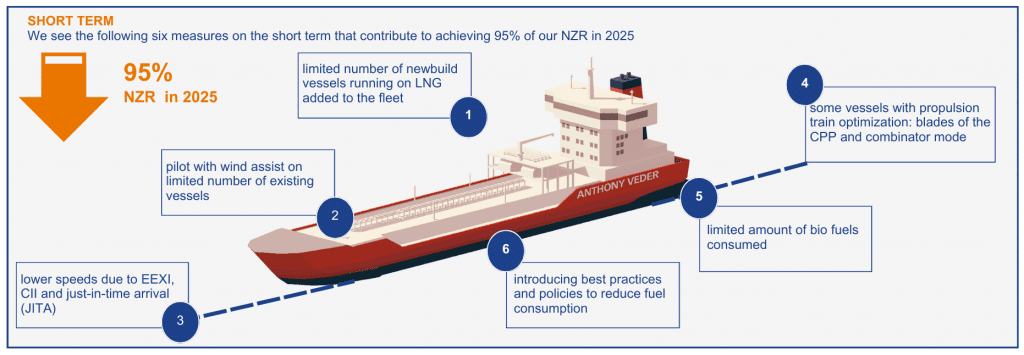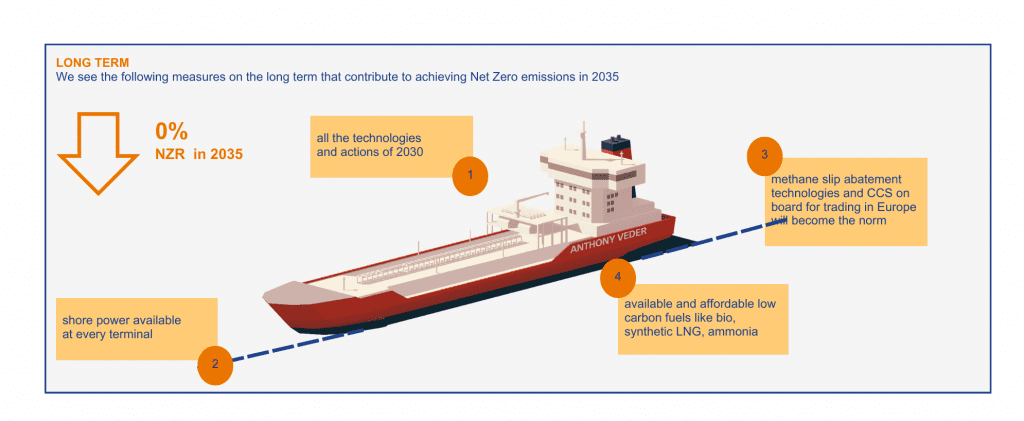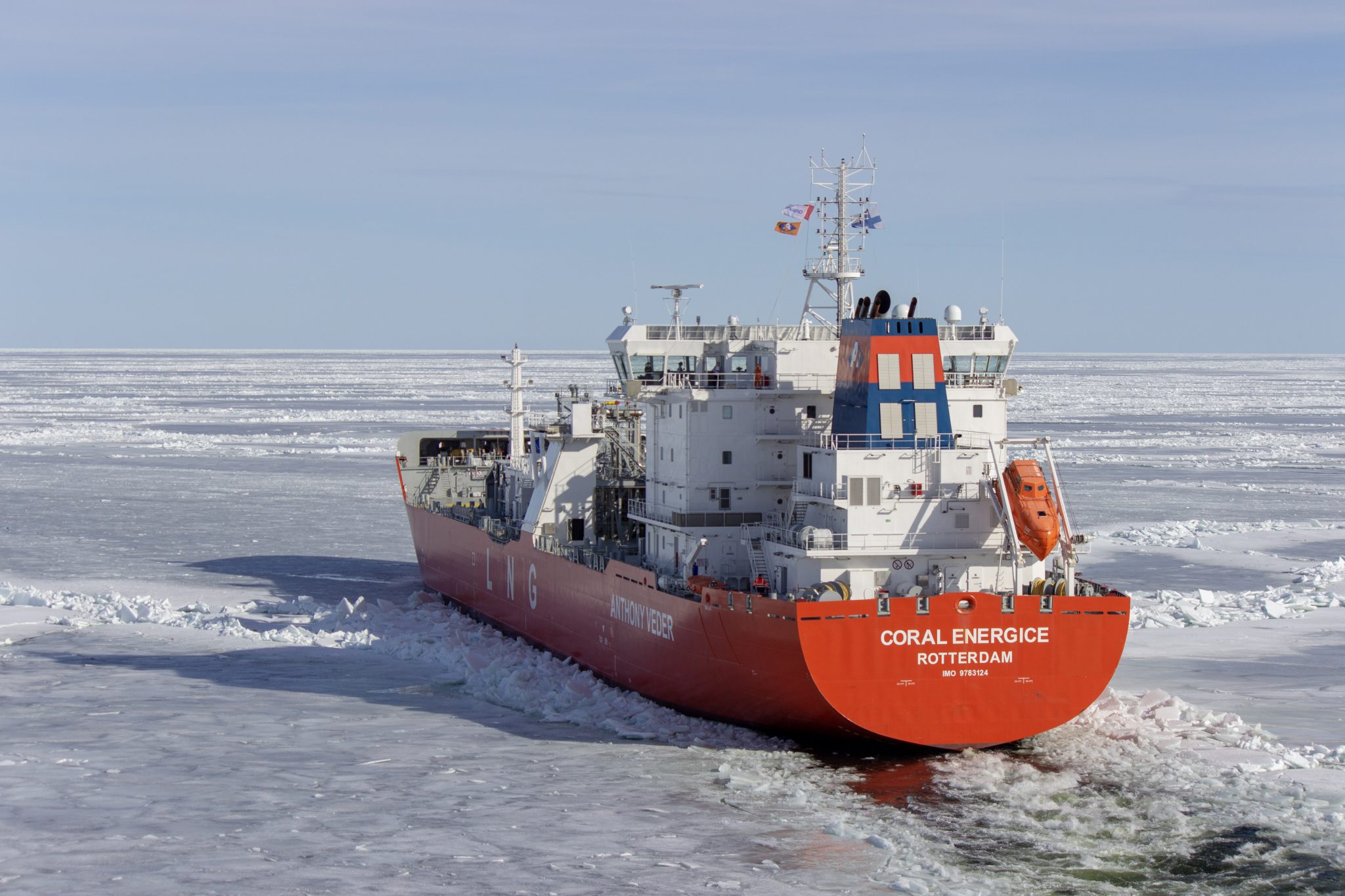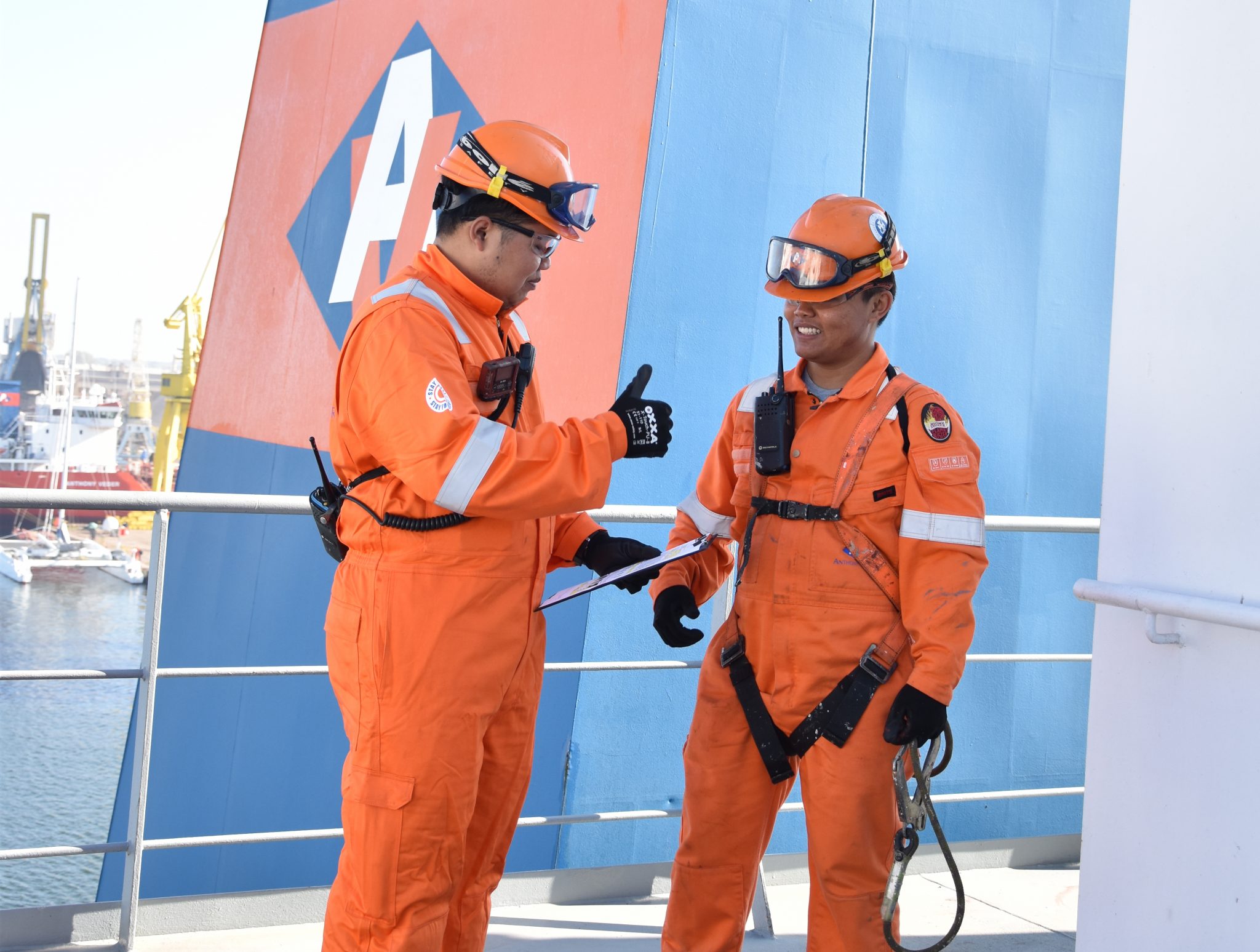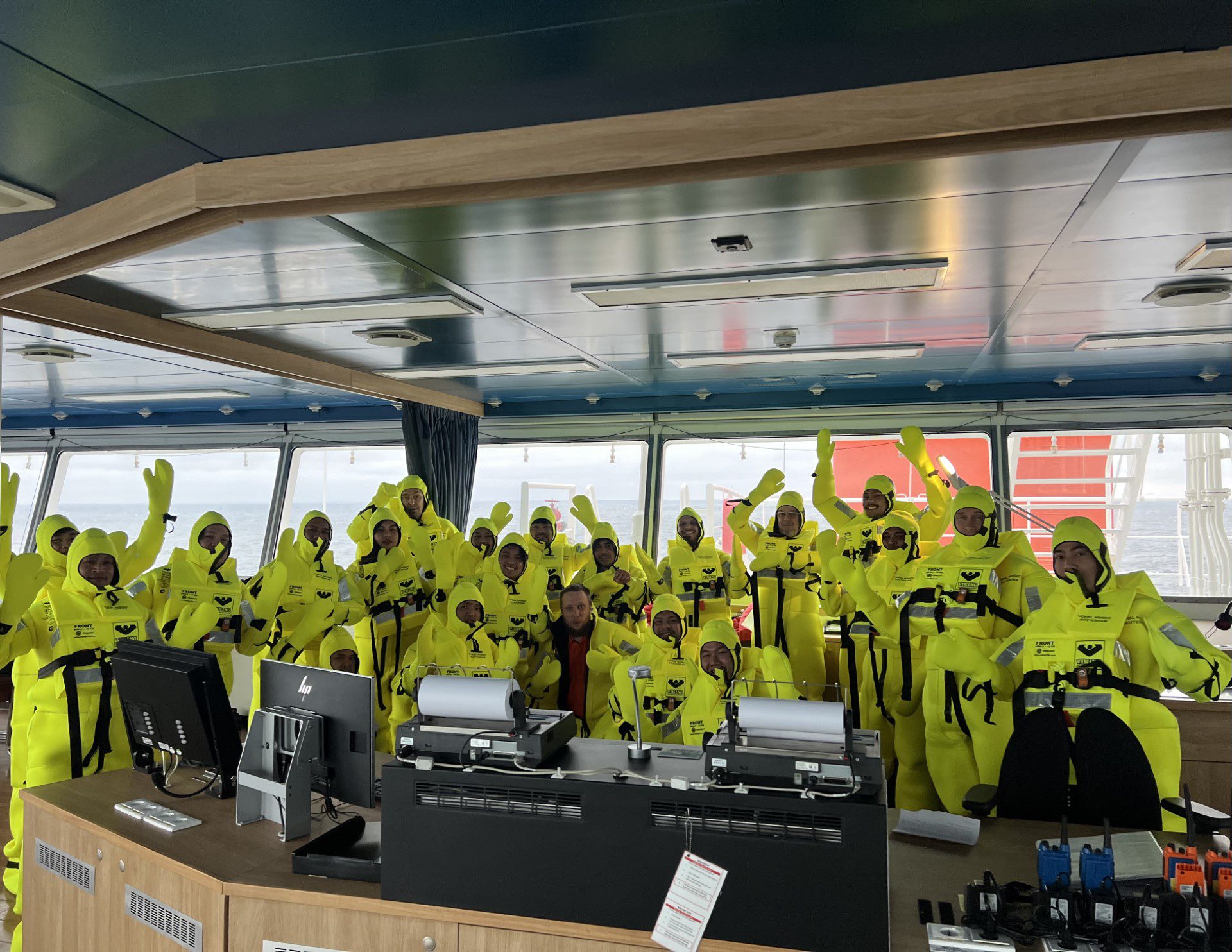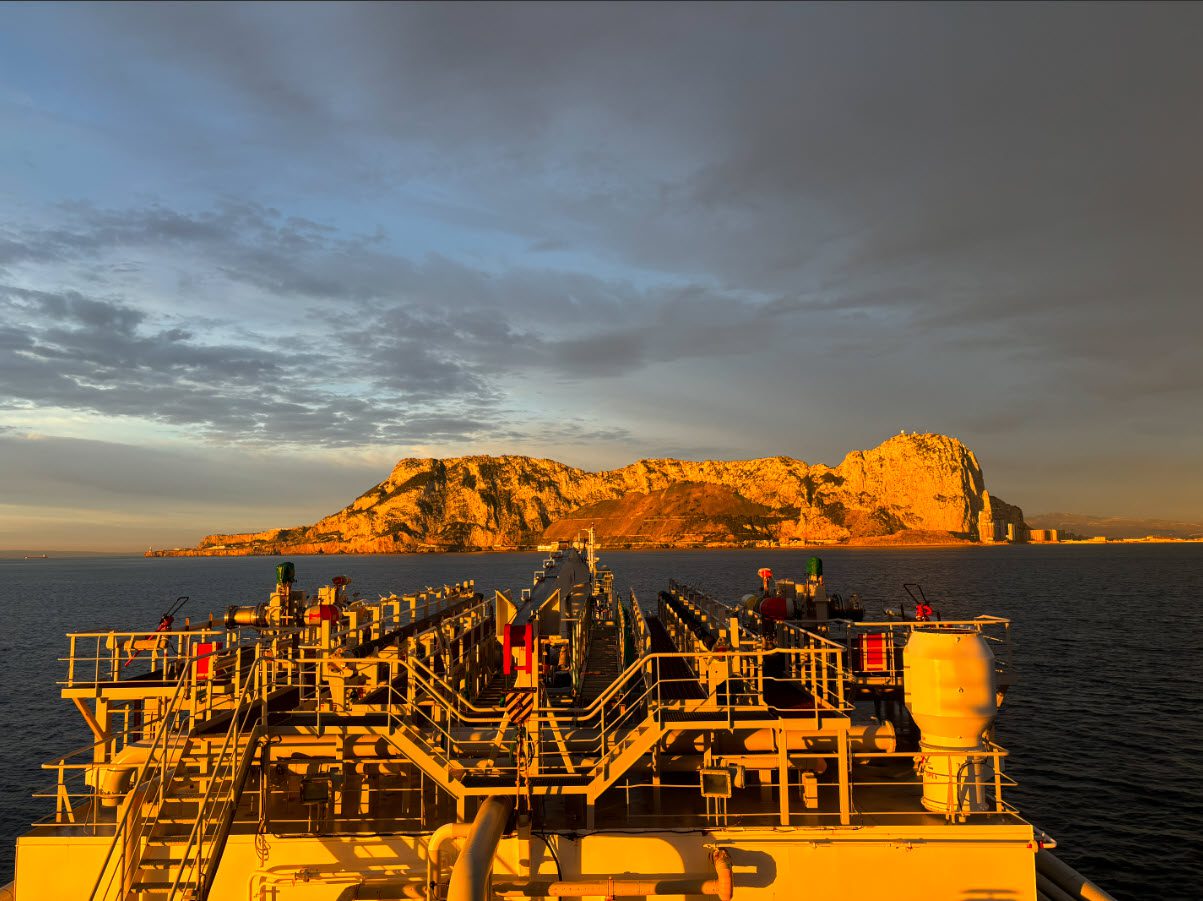
Care for Environment
ENVIRONMENTAL STRATEGY
In 2023 we embraced the very ambitious target of becoming net zero in GHG (greenhouse gases) by 2035. We have a strategy based on 3 pillars to reach this target: energy savings, act now and future-ready.

For existing vessels and newbuilds we analyzed the impact of reducing emissions in relation to the investment required. We refer to the Value Mapping paragraph that can be found later in this chapter.
We are working on expanding our set of internal and external leading indicators, that needs further detailing coming years.
LEADING INDICTATORS – INTERNAL
- Total investment made on technical energy saving measures
- Technical energy efficiency measures taken on board
- Development of best practices for energy saving measures on board
- % of LNG as fuel used on Dual Fuel (DF) capable vessels
- Governance / policies implemented to incentivise reducing emissions (e.g. venting policy)
As our ambition over time becomes more dependent on external stakeholders, such as our customers, governments and other regulatory bodies we consider the following external leading indicators.
LEADING INDICATORS EXTERNAL
- Availability and affordability of low carbon fuels compared to the fossil alternative, such as bio-LNG and synthetic gas
- The availability of shore power in ports/terminals that we visit
- Methane slip abatement: year of finalization of technology for our type of vessels, year of first (pilot) project executed, % of methane slip reduced by better engines and/or abatement technologies
- Ship based carbon capture: year of finalization of technology for our type of vessels, year of first (pilot) project executed, readiness for logistics of CO2 offloading and its onward transport and utilisation and/or geological storage, % of carbon captured and disposed
- IMO / EU regulations to include well-to-wake or LCA of fuels as means to reduce emissions
- IMO / EU regulations and/or incentives to include methane slip abatement and/or on-board carbon as means to reduce emissions
More specific clarifications on regulations related to emissions can be found under the Governance section.
Value mapping
To support the execution of our environmental strategy we have created a value map. A set of 60 emission reduction measures has been rated on its effectiveness on emission reduction versus the investment made. This is presented in a graph: the value map.
Conclusion from the value map:
Shore power
Shore power is very attractive in terms of CO2 reductions and payback time related to the investments needed on the vessels; we need our customers to arrange for the necessary investments at the terminal.
Subcooler
The subcooler is attractive for reducing emissions. It comes with a high investment, when only considering reducing CO2 emissions, payback time would be negative. However, not only CO2 is reduced as the main objective of a subcooler is saving cargo. The LNG cargo has a much higher value than CO2 and when this would be factored in, a subcooler installation on certain LNG carriers could financially become very attractive. When installed, it means we are in control of our Boil-off Gas (BOG) and do not need our main engine anymore for that purpose which enables taking other measures as well, such as reducing speed in combination with engine tuning and wind assist.
Combinator mode
Combinator-mode and engine tuning can be done at relatively low investments: these are considered quick wins, its effectiveness is however subject to the operational profile of the vessel.
Heat recovery
This comes with higher investments and is less effective on reducing emissions and would be a next step.
Propeller mode
Propeller mode, like combinator mode, can be done at a relatively low investment and considered quick win.
Wind assist
Wind assist also comes with a higher investment, however has the advantage of reducing monetary penalties under the Fuel EU regulation, which has not been factored in. Also, the measure is visible which supports our sustainable image and herewith positively contributes to sustainable behaviour.
